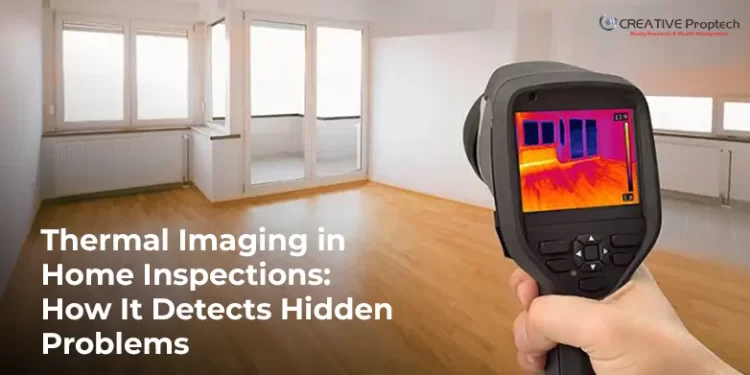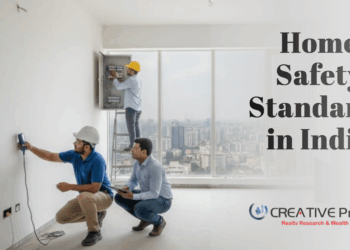What Is Thermal Imaging?
Thermal imaging is a non-invasive diagnostic technique that uses infrared cameras to capture the temperature differences across surfaces. These temperature patterns help inspectors identify anomalies that may indicate problems not visible to the naked eye.
How Infrared Cameras Work
Infrared cameras detect heat radiation from objects and convert them into visible images, usually with color gradients. Warmer areas may appear red or yellow, while cooler zones may show up as blue or purple. This visual heat map helps pinpoint areas of concern quickly and accurately.
What Problems Thermal Imaging Can Detect
Thermal imaging can uncover a wide range of hidden issues, including:
-
Water Seepage or Leaks: Behind walls, under floors, or around ceilings
-
Electrical Overloads: Overheated wires, switchboards, and circuit panels
-
Roof and Wall Insulation Gaps: Which affect energy efficiency
-
Pest Infestations: Like termite colonies that create heat zones
-
HVAC Deficiencies: Irregular cooling or heating due to duct leaks
Why It’s Especially Useful in Indian Homes
In India, many homes suffer from seasonal humidity, poor drainage systems, and aging infrastructure. Thermal inspections are especially effective in detecting:
-
Damp patches from monsoon seepage
-
Cracks hidden under tiled surfaces
-
Water accumulation in high-rise balconies
-
Mold development due to internal moisture
 Common Issues Found During Thermal Inspections
Common Issues Found During Thermal Inspections
Based on field reports, here are some frequently detected problems:
-
Hidden water seepage behind bedroom walls
-
Moisture patches under kitchen tiles
-
Hotspots in electrical distribution boxes
-
Uneven floor heating or cold spots in rooms
-
Gaps in roof insulation affecting energy usage
Benefits Over Traditional Inspections
| Feature | Traditional Inspection | Thermal Imaging |
| Visual Leak Detection | Limited | High accuracy |
| Electrical Overload Detection | No | Yes |
| Non-Invasive | Yes | Yes |
| Speed of Diagnosis | Moderate | Fast |
| Moisture Behind Tiles | Often Missed | Easily Detected |
Ideal Time to Use Thermal Imaging
Thermal imaging is ideal in the following scenarios:
-
Before Property Purchase: To detect hidden issues before closing
-
During Monsoon Season: To assess seepage or drainage failures
-
In Older Buildings: To uncover concealed wear and tear
-
Before Renovation Projects: To plan accurate upgrades
-
Post-Construction Handover: To verify build quality
Limitations and Misconceptions
While thermal imaging is powerful, it’s not magic. It:
-
Can’t “see through” walls but detects temperature differences
-
Requires interpretation by trained inspectors
-
May give false positives if environmental conditions aren’t controlled
Always pair thermal imaging with a comprehensive visual and physical inspection.
Choosing a Qualified Thermal Inspector
Look for professionals who:
-
Are certified in infrared thermography
-
Use industrial-grade FLIR or equivalent cameras
-
Provide detailed reports with visuals and explanations
-
Have experience in residential and commercial property inspections
A good inspector will walk you through the findings and recommend the next steps based on the thermal data.
Conclusion
Thermal imaging has become an essential part of modern home inspections. It brings visibility into hidden problems, strengthens negotiation power, and helps prevent costly future repairs. Whether you’re buying, selling, or simply maintaining your home, investing in a thermal inspection provides clarity, confidence, and long-term protection.
Don’t let unseen defects catch you off guard—see what your eyes can’t with thermal technology.
FAQ
1. Does thermal imaging add to the cost of a home inspection?
Yes, but the value it offers in identifying hidden issues far outweighs the added fee.
2. Can it detect water leakage inside walls?
Absolutely. Thermal imaging is highly effective in locating moisture behind paint, tiles, or plaster.
3. Is thermal imaging safe?
Yes, it’s 100% non-invasive and safe for both residents and the structure.
4. Can I request a thermal inspection separately?
Yes. Many providers offer it as a standalone or add-on service.
5. How long does a thermal inspection take?
Typically 30–90 minutes depending on the property size and condition.






